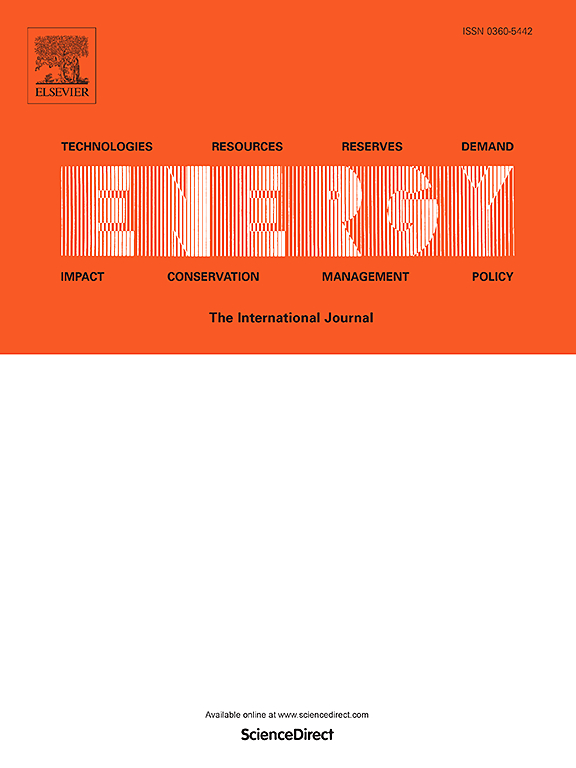软垫层柔性约束下全尺寸预应力高强混凝土能量桩的热力响应特性
IF 9
1区 工程技术
Q1 ENERGY & FUELS
引用次数: 0
摘要
能源桩具有利用地热能和支撑结构荷载的双重功能。现有的能源桩研究主要集中在自由桩头或刚性桩筏连接上,对柔性垫层连接的研究较少。通过现场试验和数值研究,分析了某既有建筑连续采暖模式下,桩顶柔性垫层约束的预应力高强混凝土能源桩的换热性能和结构响应。此外,通过数值模拟分析了冷却工况,考虑了土壤热膨胀系数和垫层强度对能源桩热力特性的影响。结果表明:PHC能源桩在加热或冷却后会产生明显的附加压应力或拉应力,导致桩整体受压或受拉,中性点向下移动;桩土轴向应力比随桩温升高而增大,随桩温降低而减小。垫层连接形式下的桩顶约束水平介于自由桩顶和桩筏约束之间。土体热膨胀系数的变化对桩身约束没有明显影响。垫层强度的增加在一定程度上增加了桩的约束应力,但作用沿桩深逐渐减弱。本文章由计算机程序翻译,如有差异,请以英文原文为准。
Thermomechanical response characteristics of full-scale prestressed high-strength concrete energy pile under the flexible constraint of cushion layer
Energy piles serve a dual function of harnessing geothermal energy and supporting structural loads. Existing studies of energy piles mainly focus on free pile heads or rigid pile-raft connections, with limited attention to flexible cushion connections. The study analyzed the heat exchange performance and structural response of a prestressed high-strength concrete (PHC) energy pile whose pile head was flexibly constrained by a cushion layer in an existing building under continuous heating mode through field tests and numerical investigations. In addition, numerical simulations were conducted to analyze cooling conditions, and the effect of soil thermal expansion coefficient and cushion layer strength on the thermomechanical characteristics of the energy pile was considered. The results showed that the PHC energy pile experienced significant additional compressive or tensile stress after heating or cooling, resulting in overall compression or tension of the pile and a downward shift of the neutral point. The pile-soil axial stress ratio increased with the rise in pile temperature and decreased with the reduction in pile temperature. The constraint level at the pile head under the connection form of the cushion layer was between the free pile head and the pile-raft constraint. The variation in the soil thermal expansion coefficient did not cause a significant change in the constraint of the pile. Increasing the strength of the cushion layer to a certain extent increased the constraint stress of the pile, but the effect gradually weakened along the pile depth.
求助全文
通过发布文献求助,成功后即可免费获取论文全文。
去求助
来源期刊

Energy
工程技术-能源与燃料
CiteScore
15.30
自引率
14.40%
发文量
0
审稿时长
14.2 weeks
期刊介绍:
Energy is a multidisciplinary, international journal that publishes research and analysis in the field of energy engineering. Our aim is to become a leading peer-reviewed platform and a trusted source of information for energy-related topics.
The journal covers a range of areas including mechanical engineering, thermal sciences, and energy analysis. We are particularly interested in research on energy modelling, prediction, integrated energy systems, planning, and management.
Additionally, we welcome papers on energy conservation, efficiency, biomass and bioenergy, renewable energy, electricity supply and demand, energy storage, buildings, and economic and policy issues. These topics should align with our broader multidisciplinary focus.
 求助内容:
求助内容: 应助结果提醒方式:
应助结果提醒方式:


